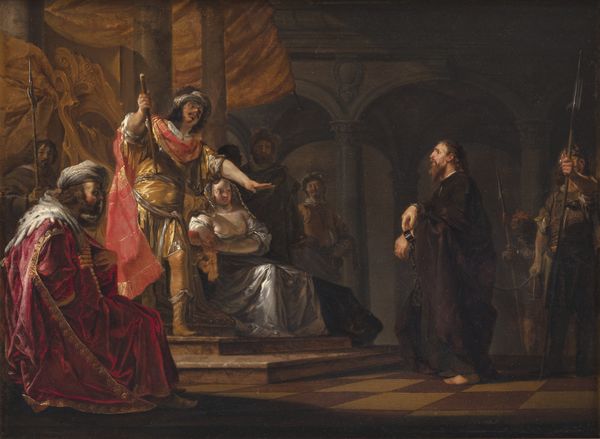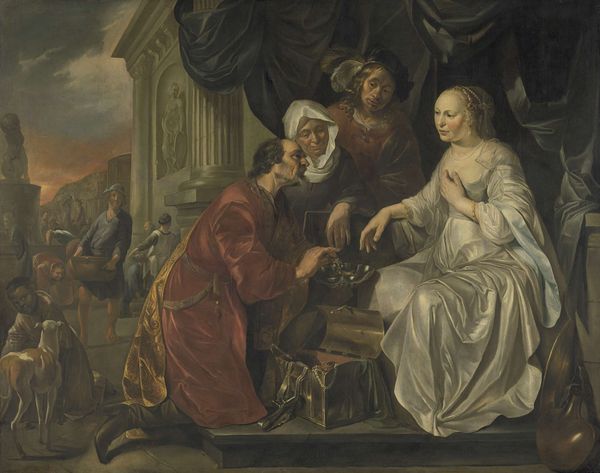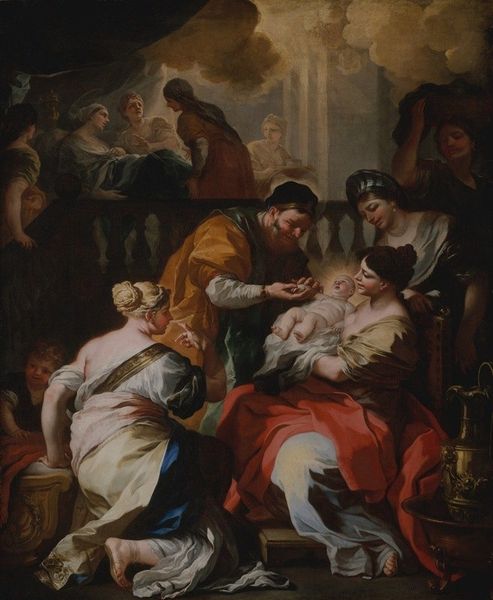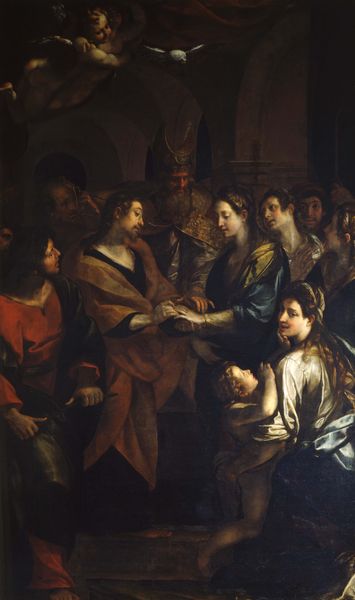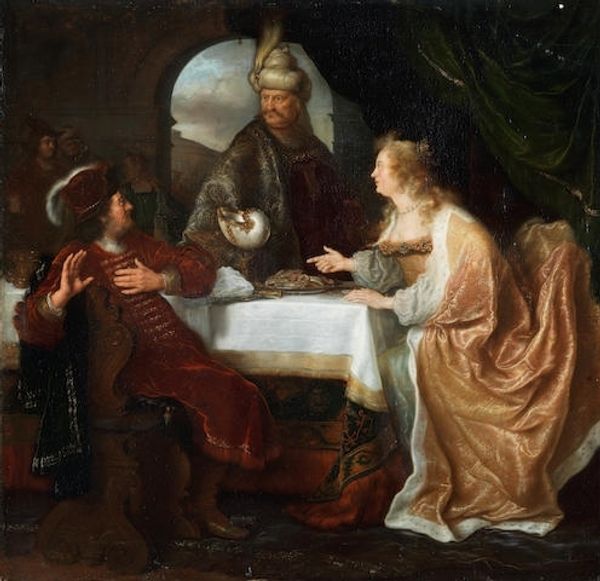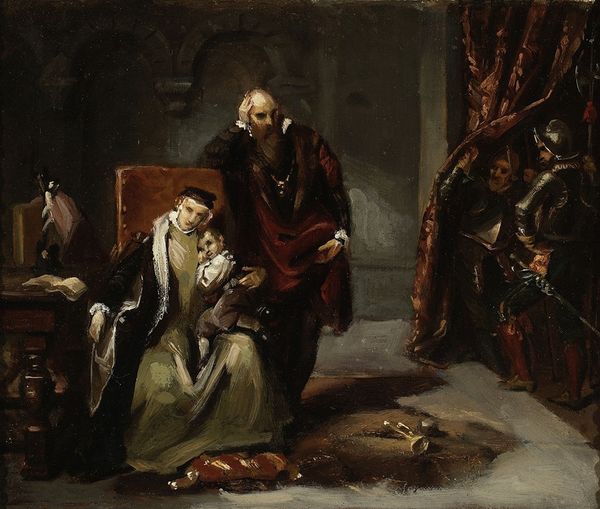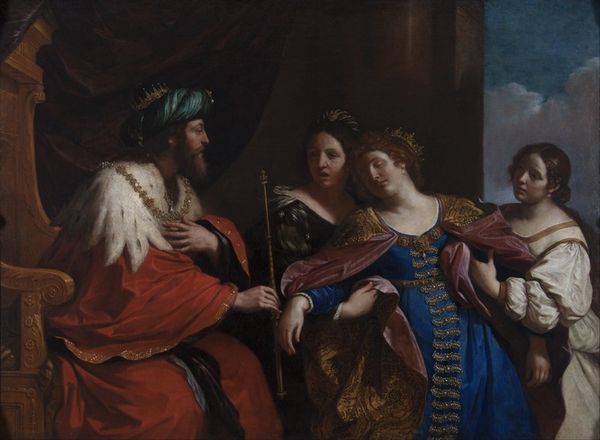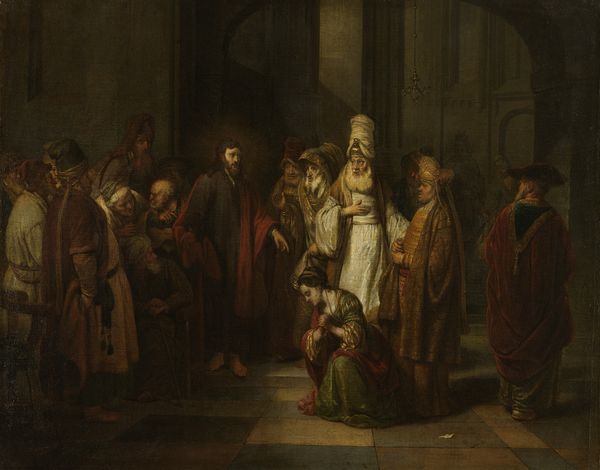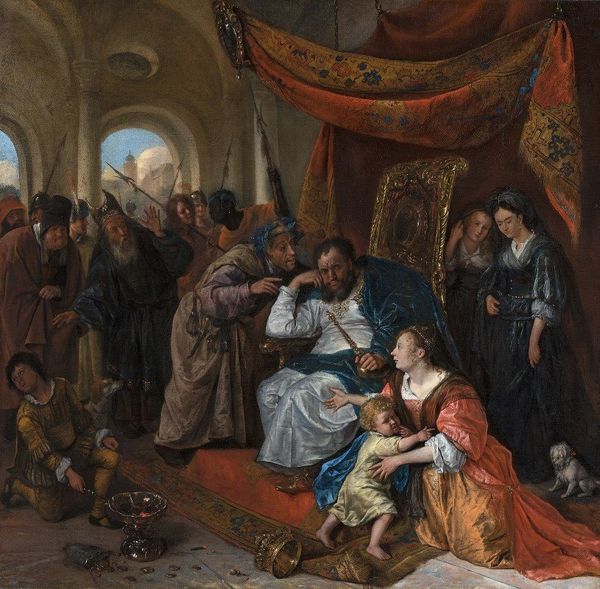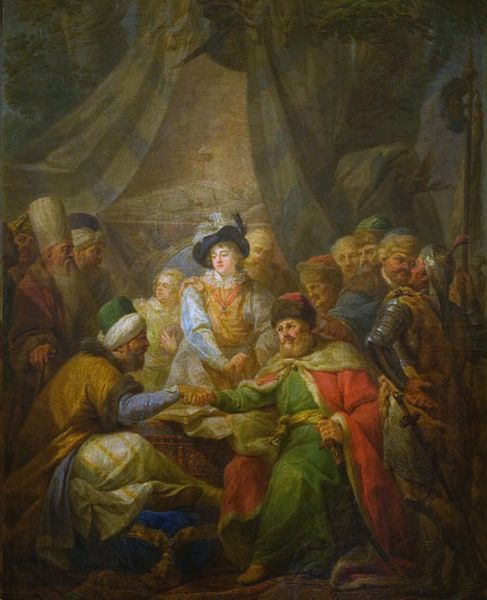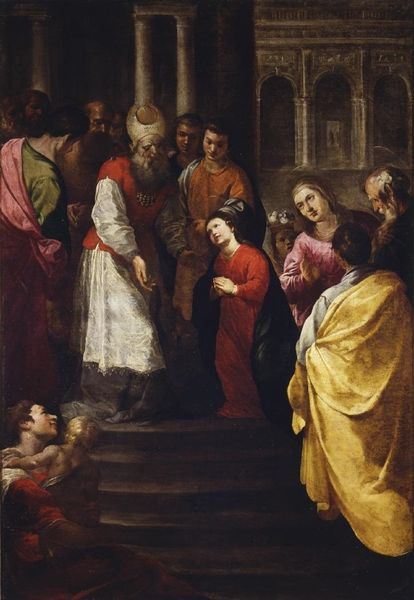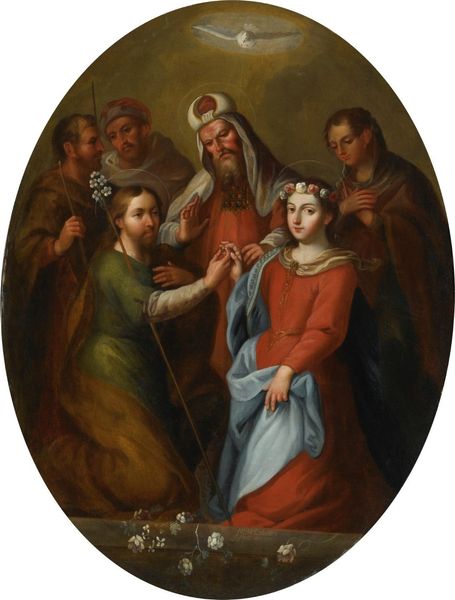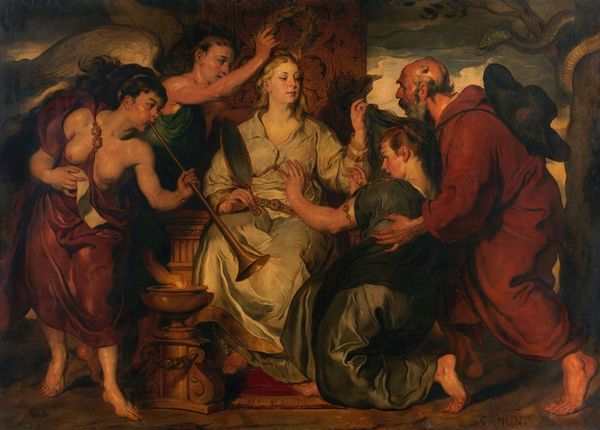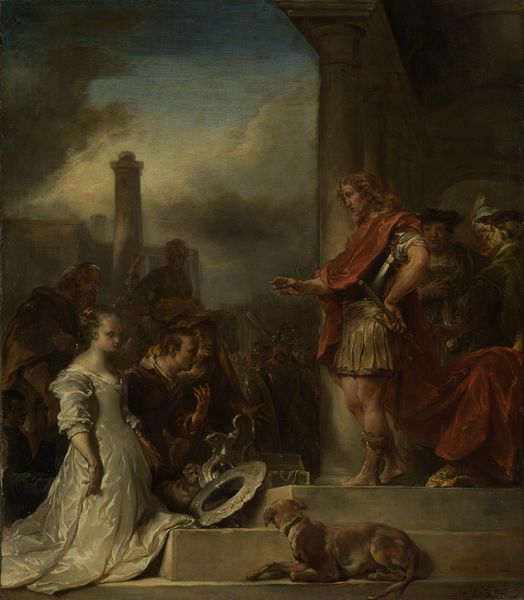
painting, oil-paint
#
portrait
#
narrative-art
#
baroque
#
painting
#
oil-paint
#
chiaroscuro
#
genre-painting
Copyright: Public Domain: Artvee
Editor: So, this is Gerard van Honthorst’s "Artemisia," painted around 1635, done in oil. The subject matter seems pretty heavy... What story do you think is being told here? Curator: Well, we see Artemisia receiving a cup of ashes mixed with her husband Mausolos, a somber narrative choice popular in Baroque painting, linking to ideals of grief, honour, and even gendered power. What I find crucial is its visual politics: Honthorst paints for a particular viewership, crafting images that serve dynastic ambitions or celebrate artistic lineages. Have you considered how museums or powerful patrons might have shaped such imagery at the time? Editor: Hmm, so it's not just a personal story but also a political statement of sorts? That is such a heavy thing! I guess Baroque was all about power in some form... Curator: Precisely! And beyond dynastic power, consider the act of display itself. How did early museums present works like these? The staging, the curation, they all molded how people perceived the subject matter. Does that added layer of historical context change your perception of the painting now? Editor: Definitely! Knowing how its message could have been framed and perhaps even manipulated...it brings a totally different layer to what I initially perceived. I can't just look at the grief; I must question the motive! Curator: Exactly, and how power seeks to perpetuate and memorialize itself through images. Editor: Okay, that’s quite a lesson. This piece makes you wonder not only *what* the story is, but *why* it’s being told, and who benefits.
Comments
No comments
Be the first to comment and join the conversation on the ultimate creative platform.
